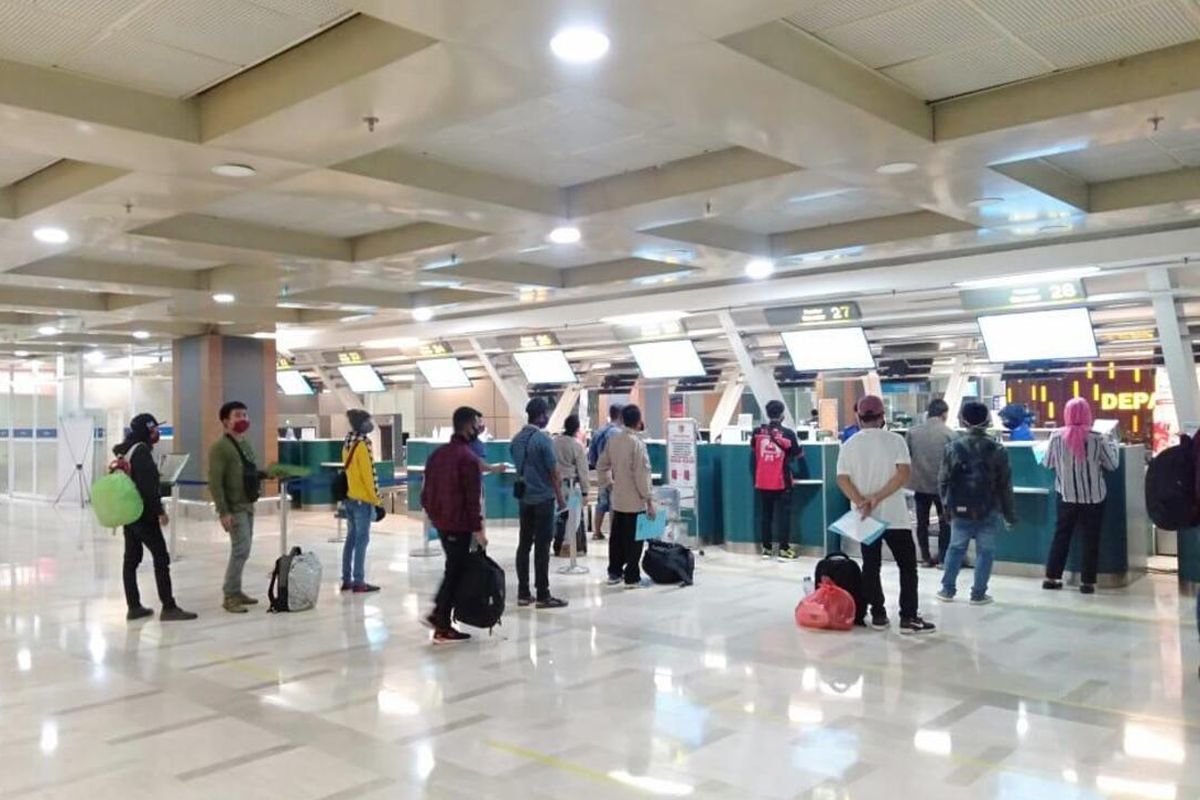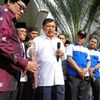Airport Operator Angkasa Pura I Upbeat on Indonesia’s Airline Industry Revival

JAKARTA, KOMPAS.com – Airport operator PT Angkasa Pura I is optimistic Indonesia’s airline industry will revive itself in the second half of 2020 as the number of flight passengers has so far increased in July.
The state-owned company operates 15 airports across Indonesia.
From July 1-7 Angkasa Pura I recorded 227,642 passenger movement, 3,869 aircraft movement, and 7.21 million kilograms of cargo movement.
Read also: At Least 2,600 Lose Jobs as Indonesia's Lion Air, Sriwijaya Air Downsize
The data represents an uptick in comparison to the 222,040 passenger movement recorded in June 1-15.
Angkasa Pura I CEO Faik Fahmi said the increase in flight passengers was due to a change in Decree Number 9 Year 2020 by the National Covid-19 Task Force.
It allows flight passengers to present results of a rapid or polymerase chain reaction (PCR) test from 14 days before their departure. Previously, passengers were given a three-day timeframe for the test results.
Read also: Mandatory Covid-19 Rapid Tests on Passengers Force Cancellation of Lion Air Flight
“This regulation gives passengers more time to prepare themselves and arrange their travel plans better,” said Faik on July 8.
Since early July, Juanda Surabaya Airport became the busiest airport having attended to 56,268 passengers, 723 aircraft movement, and handling as many as 816,772 kilograms of cargo.
Read also: Travel Agents and Airlines in Indonesia Go Through Turbulence from Pandemic
Sultan Hasanuddin Airport in Makassar came in second place having facilitated 51,998 passengers, 708 aircraft movement, and managing 1,184,391 kilograms of cargo.
“In total, aircraft traffic between April 25 and July 5 in Angkasa Pura I’s 15 airports have served as many as 23,102 aircraft movement and handled 73.2 million kilograms of cargo,” said Faik.
The state-owned company will continue to enforce and monitor Covid-19 health protocols in the new normal period with the aim of breaking the chain of transmission.
Read also: Indonesia Eyes Local Covid-19 Vaccine Mass Production by Mid-2021
The company is turning to its Airport Operations Control Center (AOCC) which harnesses the power of technology to support Angkasa Pura I’s operational, service, and business needs.
AOCC is one of the state-owned company’s efforts to digitalize its airport operational activities.
It is also a step in implementing a smart airport with the aim of achieving operational excellence and service excellence for all its 15 airports.
The first AOCC was launched on March 2, 2018 at the SAMS Sepinggan Balikpapan Airport and was later implemented in 11 other airports.
“In the midst of the coronavirus pandemic, the presence of Angkasa Pura I’s AOCC is very useful to monitor the implementation of health protocols. This is in a bid to prevent the spread of the Covid-19 virus during the new normal period in real-time while stopping the virus’ chain of transmission,” said Faik Fahmi.
(Writer: Yohana Artha Uly | Editor: Bambang P. Jatmiko)
Simak breaking news dan berita pilihan kami langsung di ponselmu. Pilih saluran andalanmu akses berita Kompas.com WhatsApp Channel : https://www.whatsapp.com/channel/0029VaFPbedBPzjZrk13HO3D. Pastikan kamu sudah install aplikasi WhatsApp ya.


































